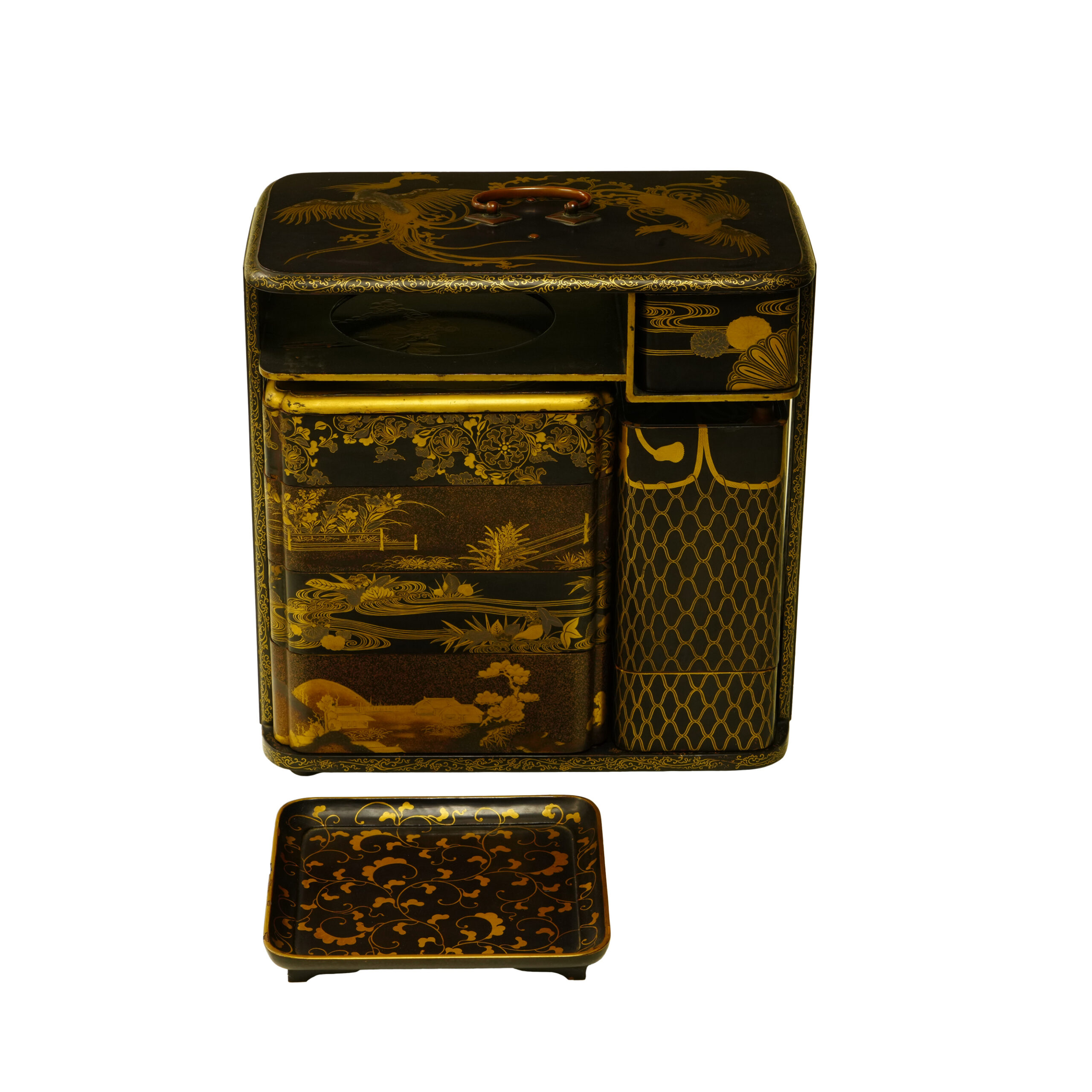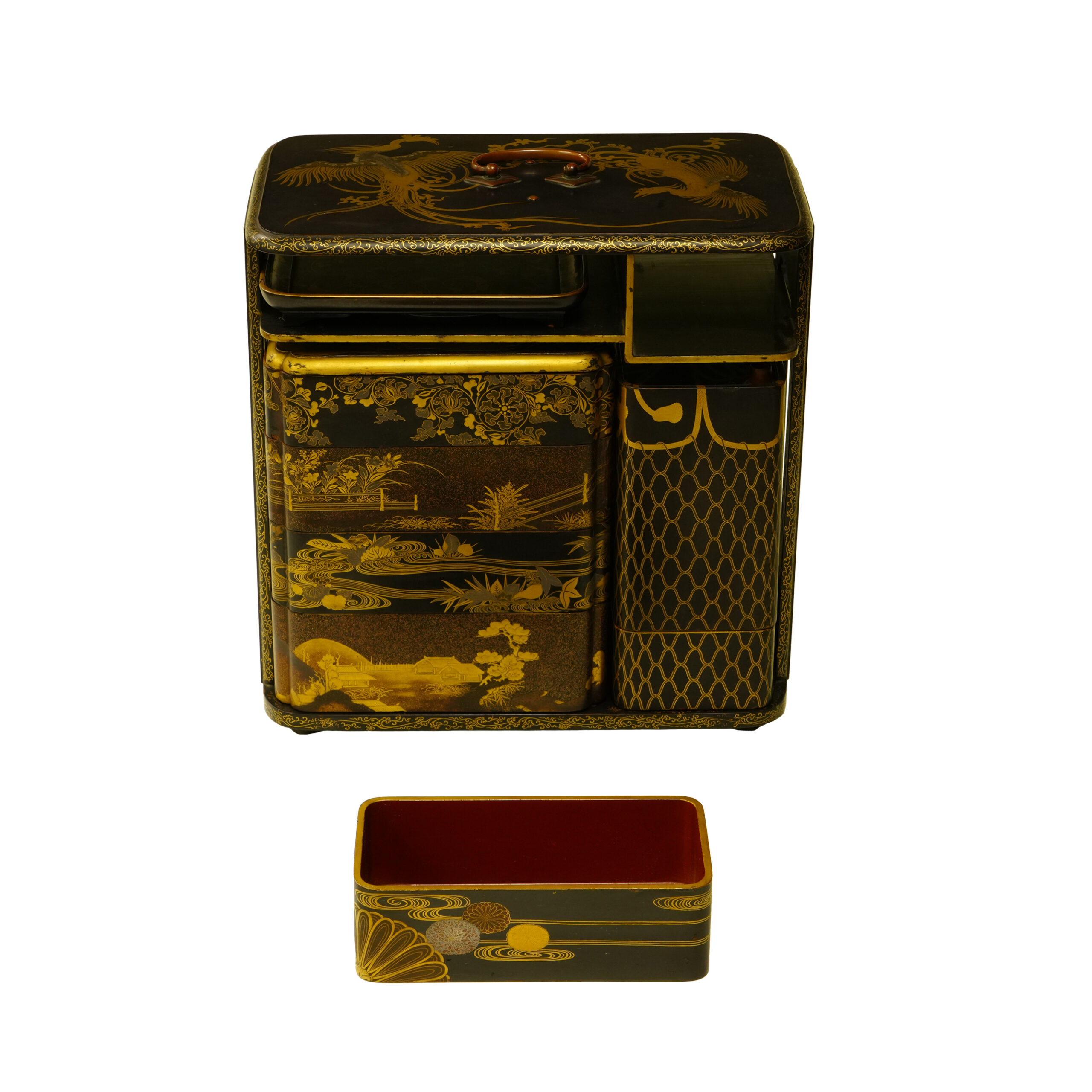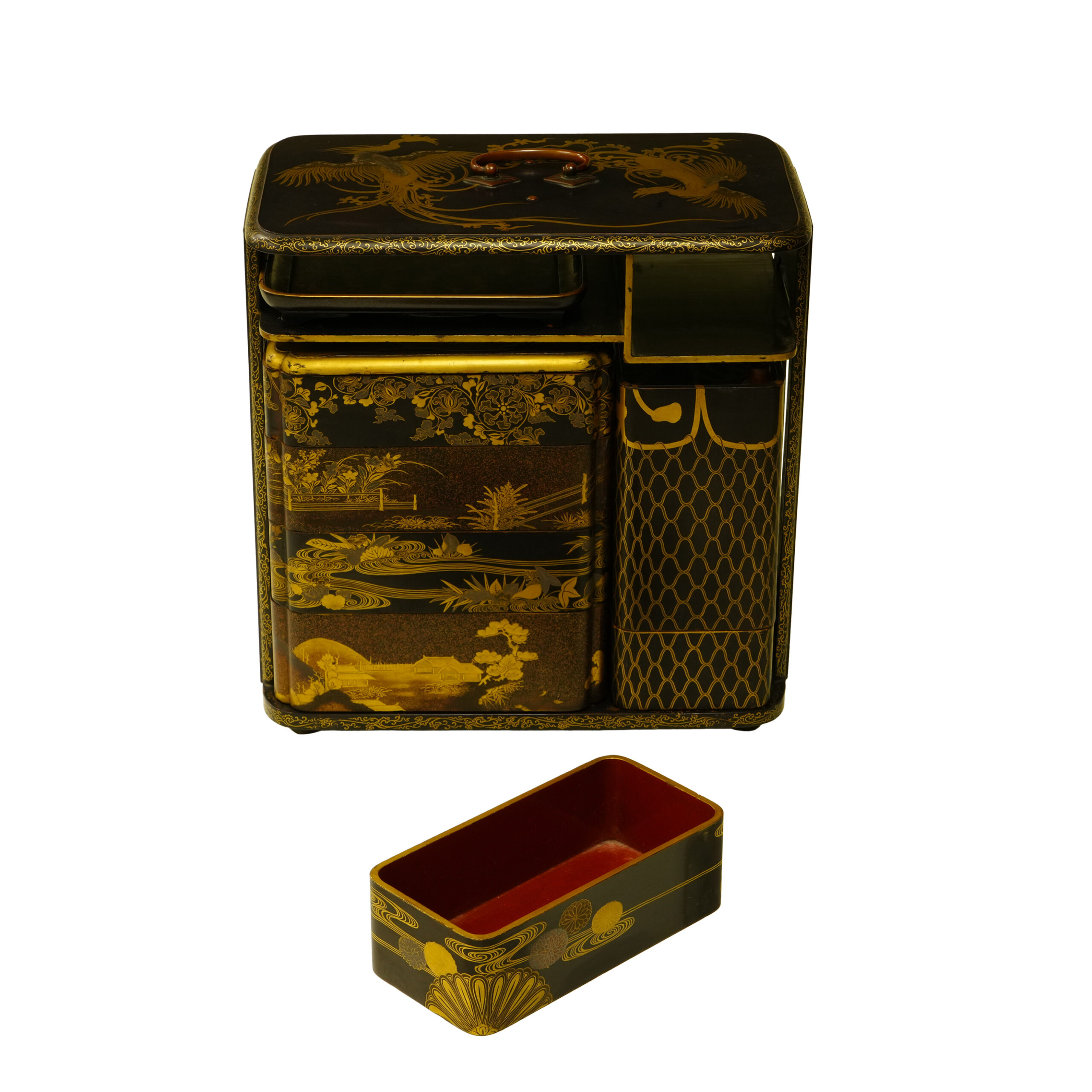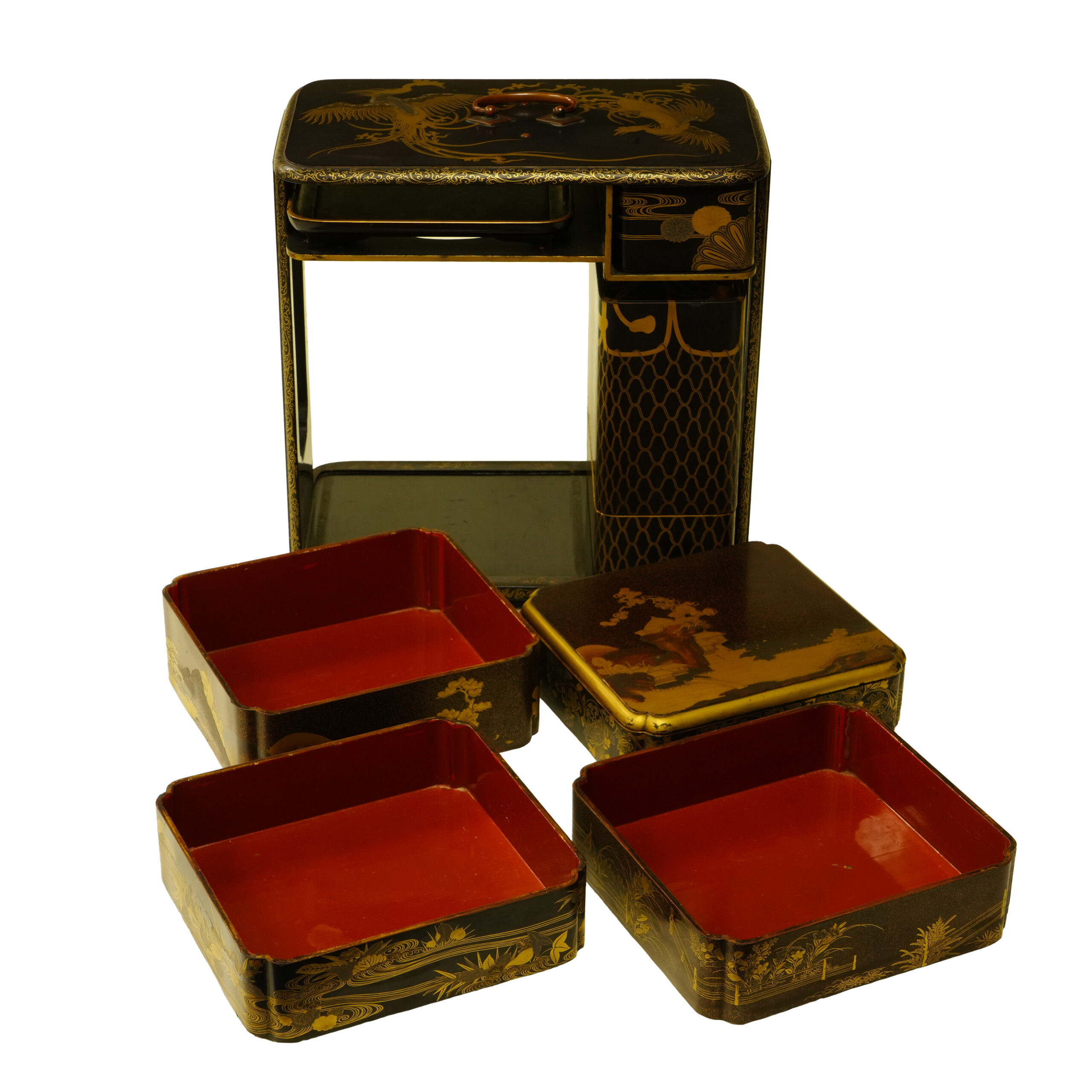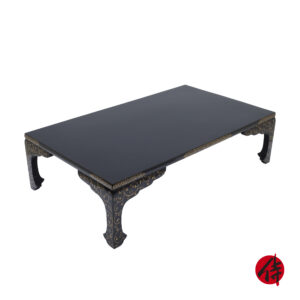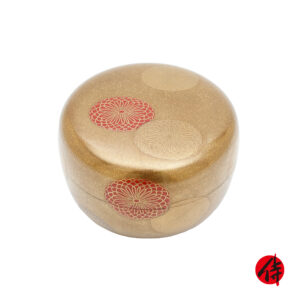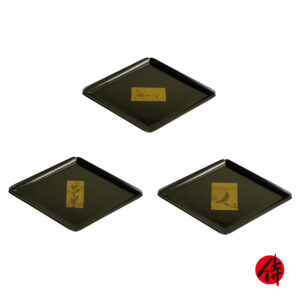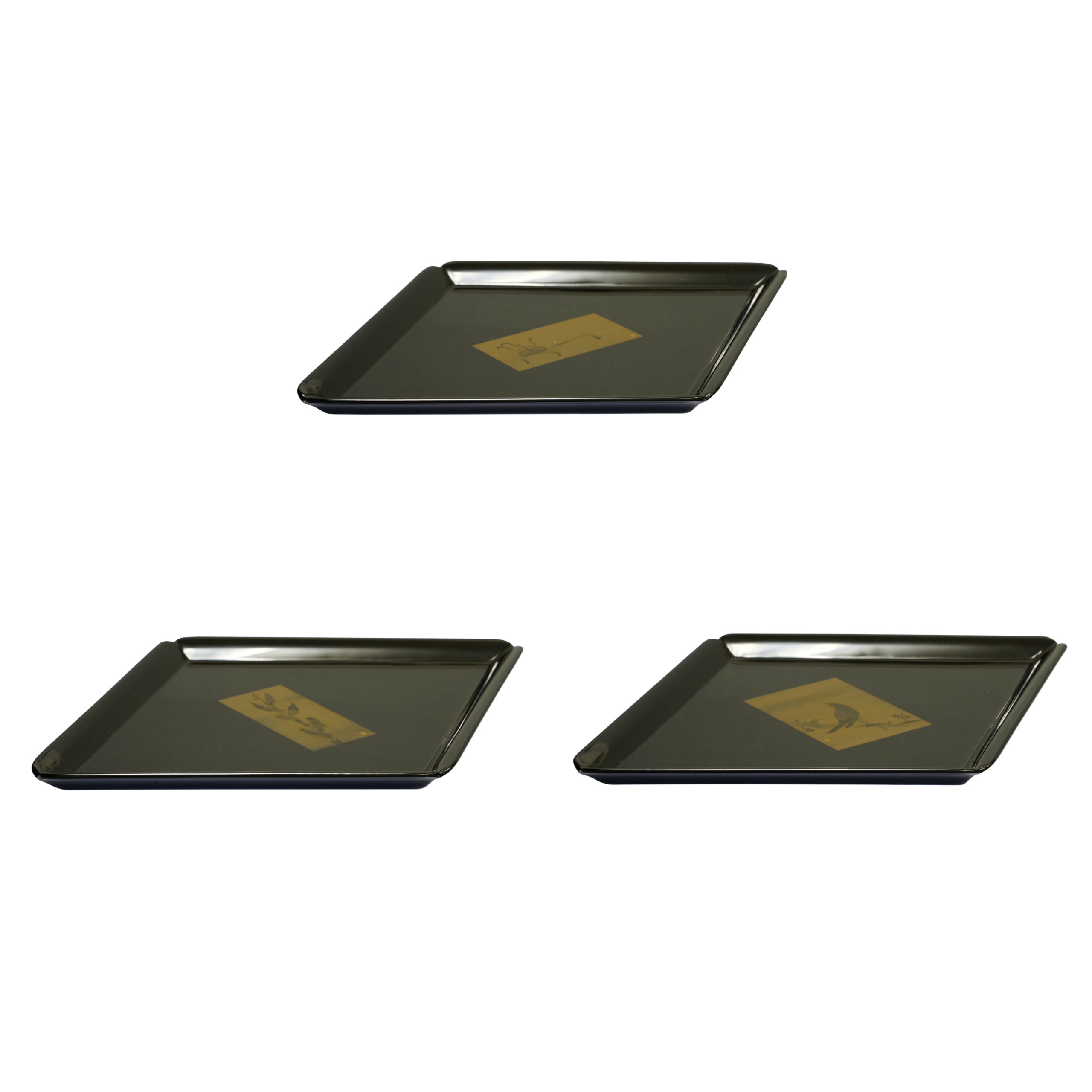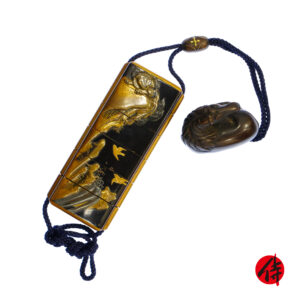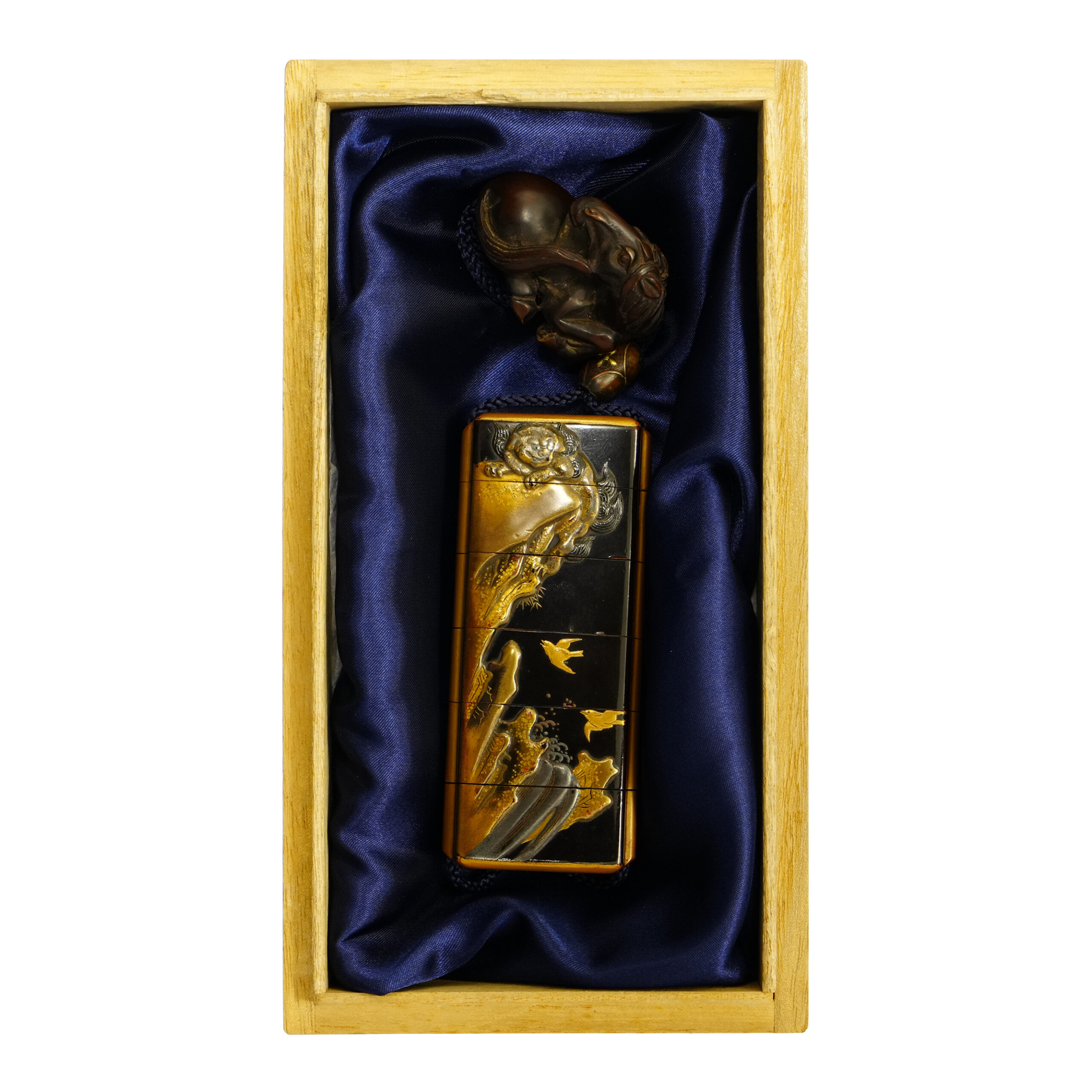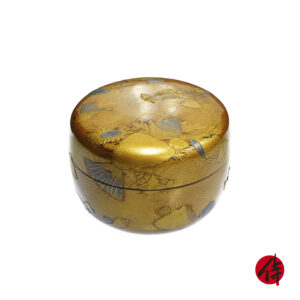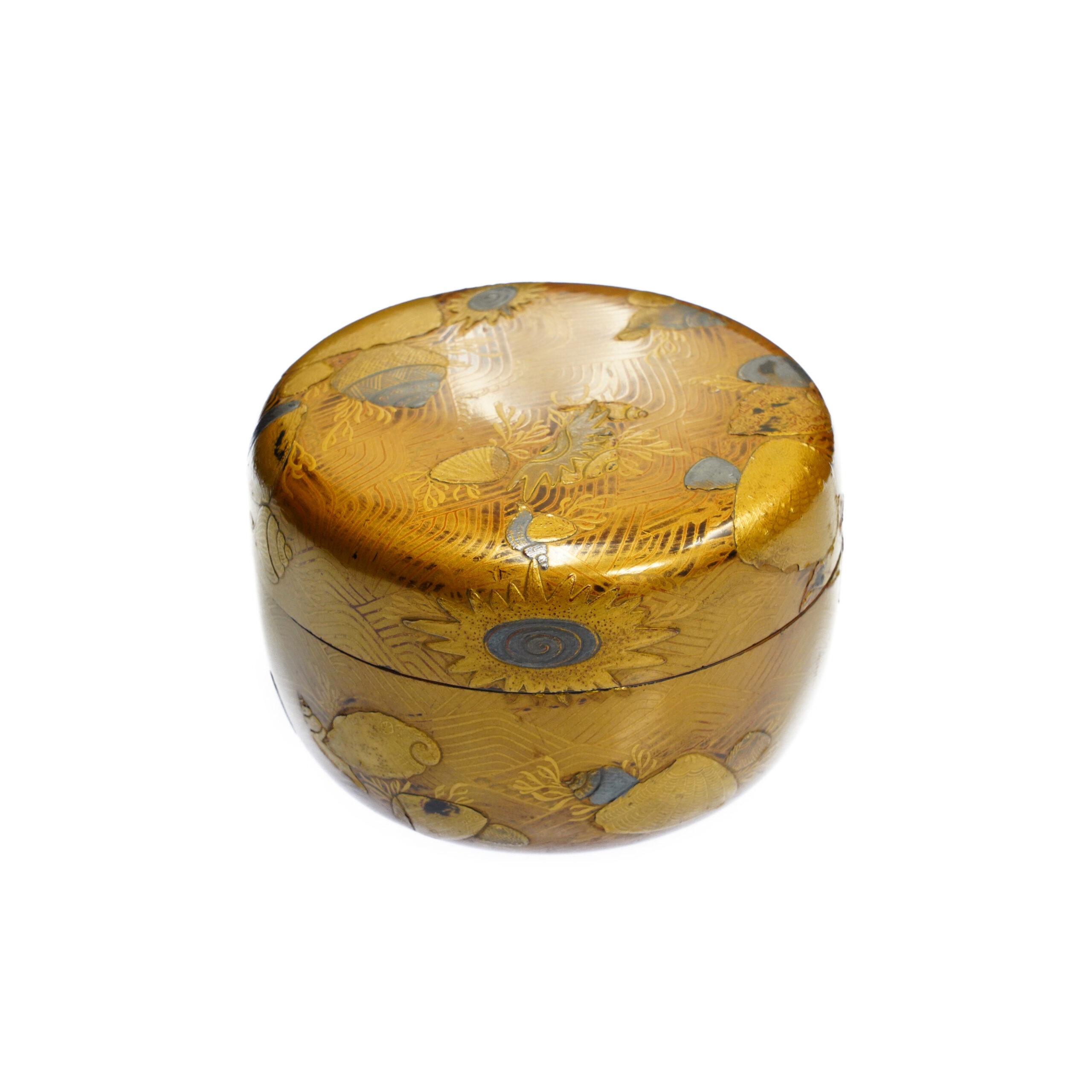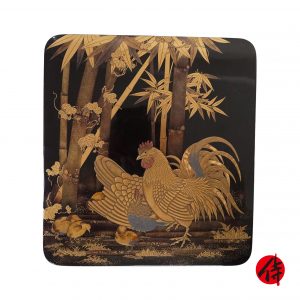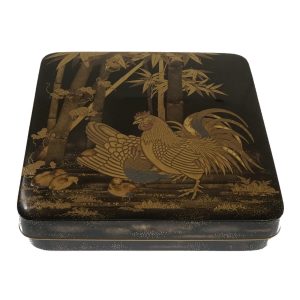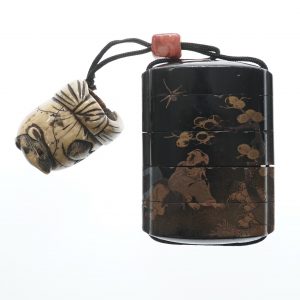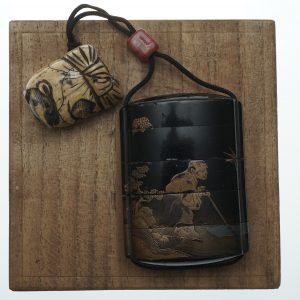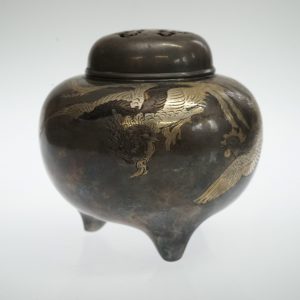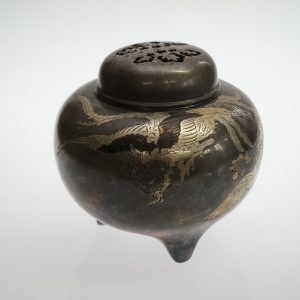Description
This item is a Bento (弁当, lunch box). This Bento has a gorgeous appearance, painted entirely in black lacquer and decorated with the Makie (蒔絵) technique. The Makie is a typical Japanese lacquer art technique developed uniquely in Japan for about 1,200 years. Firstly, it needs to draw a picture with lacquer on the surface with a thin brush. Next, sprinkle the gold powder from above to show the pattern before the lacquer hardens. This technique makes a gorgeous and elegant look to works, as seen in this Bento.
Each of the tiers that make up this Bento box has a different design, mainly landscape paintings related to plants. Fine lines are intersected to make a pattern that looks similar to a net. We believe it is a type of classical Amime Monyou (編目文様, mesh/ netlike pattern). There is a Japanese expression “一網打尽 (Ichimou Dajin),” that means catching the whole herd with one throw with a net. Based on this, some Samurai families used the Amime Monyou for their family crests, wishing to defeat enemies together as if to hit the net. In addition, this pattern has meanings as a lucky charm, such as “big catch” and “catching happiness.”
Focusing on the top of this box (surface with a handle attached), you would find the figures of two birds. We assume they are the Houou (鳳凰, Fenghuang), which is called the Shirei (四霊), with Kirin (麒麟, Qilin), Kame (亀, Turtle), and Ryu (龍, Dragon). And it is a god beast that resembles a combination of chicken and peacock. The Houou was considered an auspicious sign in the ancient continent, and it was believed that the Houou would show up when the brilliant emperor appeared. People appreciate its graceful shape in Japan.
On the side of this Bento, we could see the Kiri Karakusa (桐唐草) pattern. As its name implies, this design is a combination of the Kiri (桐, pawlounia) and the Karakusa (唐草, arabesque). Although the paulownia flower part is omitted and the judgment is based on the shape of the leaves, we estimate these leaves show a paulownia pattern. The Kiri pattern generally comprises three standing straight inflorescences and three leaves. The number of blooming flowers at each inflorescence means the ranks of this design. As seen on this Fuchi Kashira, the Gosan-no-Kiri (五三の桐) pattern is a popular design that the paulownia motif is used. According to tradition, the Houou rests its wings at the paulownia tree; therefore, it has come to be regarded as a holy plant. And now, this plant motif is connected with the Houou pattern we mentioned above. The Karakusa pattern is a design in which vine stems and leaves are twined and make curves. Since ivy has a strong vitality and grows without interruption, people regarded this design as a symbol of prosperity and longevity.
If the object is just for storing things, a simpler-designed box or plain box could also serve as a storage case. However, the occasion where such highly decorative utensils were used was probably a special meal, and this Bento box might have been used for some anniversary or celebration. We believe it is suitable for displaying in your room as interior decoration and would add color to your room.
*As this item is an antique, please check each photo and ensure its condition.

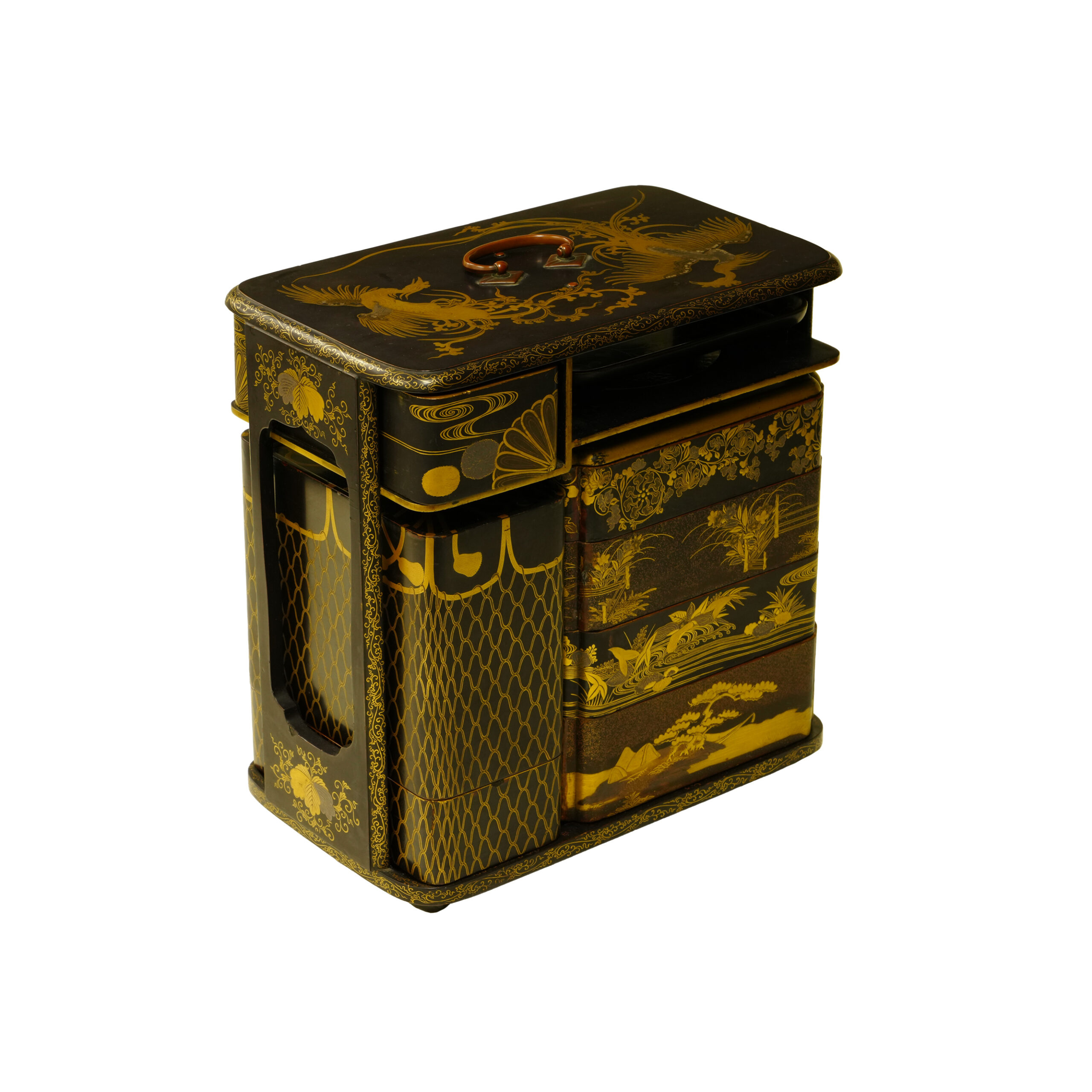
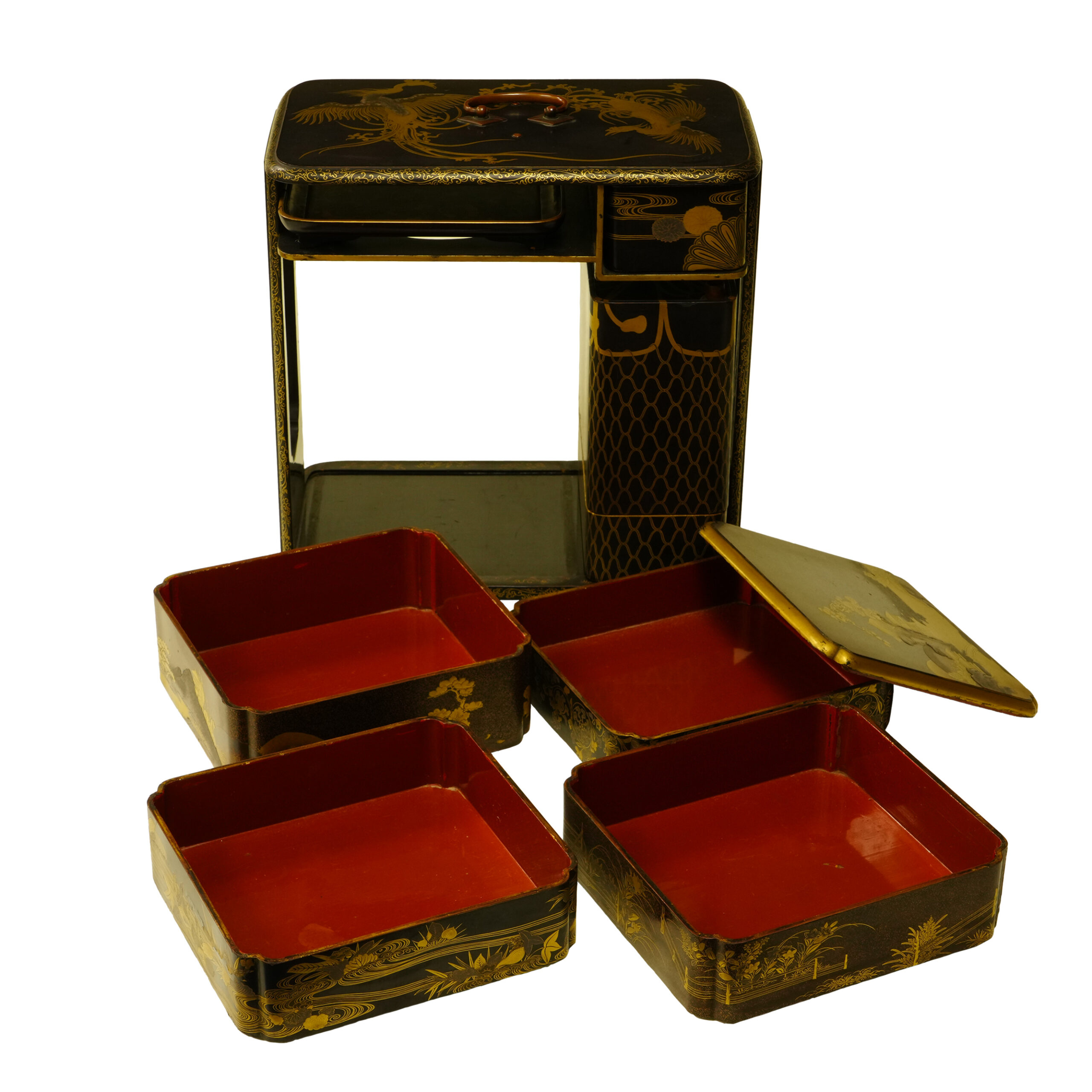
【About us】
Samurai Museum is located in Tokyo, Japan, exhibiting antique artifacts related to the Samurai history. Samurai Museum Shop is the place for those who are interested in Japanese culture and craftsmanship. We deal with antique Samurai swords/armor, traditional crafts made in Japan and so on.
【Payment method】
We accept payment through Stripe (Credit card), PayPal, Apple Pay or ChromePay, all of which are secure payment methods. Also, you don’t need to make an account on Stripe for the checkout. If you prefer other payment method, please contact us. You may either pay in JPY, USD, AUD, CAD, EUR, CHF or GBP. The price is set in Japanese Yen. Prices in other currencies are automatically calculated based on the latest exchange rate.

【Shipping duration】
We normally ship via EMS (Express Mail Service) provided by Japan Post. It usually takes at least 5-14 days to deliver the package after you place an order. Time of delivery is estimated as accurately as possible by the carrier but does not take into account any delays beyond our control such as by inclement weather, post office holiday seasons.
We offer Free International Shipping as long as we can ship your order by EMS. If you prefer other shipping carriers, please contact us.
We will inform you of the order’s tracking number via email. Please make sure you fill out your valid email address correctly.
*If you like to make sure if EMS shipping is available to your country, please contact us.

【How to make sure the condition】
Please keep in mind that what you are going to purchase is an antique item. We uploaded high resolution photos for you to check its condition thoroughly. If you like to see more photos with different angles, please feel free to contact us. We will be happy to send them to you so that you can make informed decision.
It is essential for us to know that you are happy with your choice of antique item and we are prepared to use the best of our ability to serve you.
Would you like see some more Antique items for sale? Please check the link below. We hope you can find your favorite item.
https://www.samuraimuseum.jp/shop/product-category/antique/
